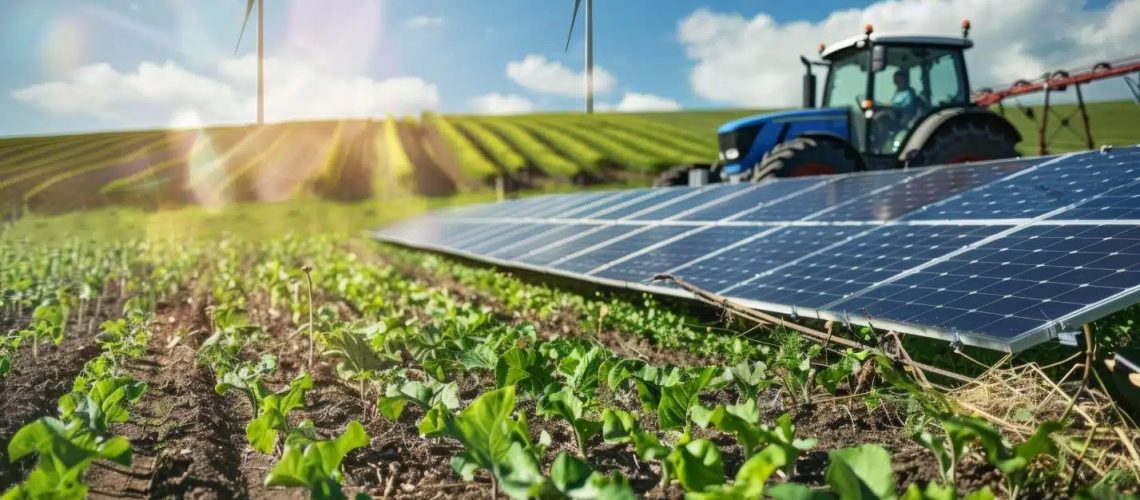U.S. farmers reported an increased interest in leasing land for solar energy production, according to the monthly Purdue University/CME Group Ag Economy Barometer index. Furthermore, views on farmland value also saw a boost because of clean energy production on agricultural sites. This month’s Ag Economy Barometer survey was conducted May 13-17.
The index showed that interest in leasing farmland for solar energy production is on the rise, according to recent survey findings. In both April and May, approximately 20% of respondents — up from just 12% in March — have discussed leasing farmland for solar energy production within the last six months. Notably, over half (55%) of respondents were offered long-term lease rates of $1,000 per acre or more, with 27% receiving offers exceeding $1,250 per acre. Combining data from both April and May surveys reveals that approximately 30% of respondents who explored leasing options have now signed solar energy leases for farmland they control.
Producers’ views on farmland values in May remained steady, with a small 3-point increase in the Short-Term Farmland Value Expectations Index. Compared to last fall, producers’ sentiment in 2024 has weakened, as indicated by an average index of 116 from January to May, down 6% from the average of 124 in October-December 2023. Those expecting higher farmland values in the coming year point to nonfarm investor demand and inflation as key drivers for their optimism. Notably, the survey expanded its response categories in April and May to include energy production from wind and solar installations as a reason to expect values to rise. In May, 12% of optimistic respondents cited energy production as a factor for their positive outlook, up from 8% in April.
“While the overall outlook on farmland values showed little change in May, the evolving landscape of energy production is beginning to play a role in producers’ views,” said James Mintert, the barometer’s principal investigator and director of Purdue University’s Center for Commercial Agriculture. “We are seeing a shift in how alternative revenue sources are impacting farmland value expectations.”
In addition, interest in developing Carbon Capture and Storage (CCS) projects is rising among ethanol plants, partly driven by tax credits in the Inflation Reduction Act. This month’s survey inquired about farmers’ experiences with potential CCS projects from ethanol plants. Seven percent reported being approached about such projects. Payment rates per acre ranged from under $26 to over $50, showcasing considerable variation. Future surveys will delve deeper into CCS project specifics.
The overall outlook of U.S. farmers increased in May as the Purdue University/CME Group Ag Economy Barometer index rose to 108, marking a 9-point increase from April. Both of the barometer’s subindices saw increases, with the Index of Future Expectations climbing 11 points to 117 and the Current Conditions Index rising 6 points. The rise in crop prices played a role in boosting farmer sentiment this month. By mid-May, Eastern Corn Belt cash corn prices had increased by 6% to 7%, and soybean prices had risen by 2% to 3% since the April survey was conducted. The improvement in prices aligned with good corn and soybean planting progress, which likely contributed to the sentiment improvement.
“The boost in the Index of Future Expectations reflects farmers’ expectation that conditions will improve, although it’s clear 2024’s financial challenges are still a concern,” Mintert said.
The Farm Financial Performance Index rose to 82 in May, a 6-point increase from April. This index, which asks producers to compare their farm’s expected financial performance to last year, shows some improvement. However, despite the gain, the index remains 15 points lower than at the end of last year. This indicates that producers still anticipate 2024 to be a more financially challenging year compared to 2023.
Producers’ outlook on capital investments improved modestly in May, with the Farm Capital Investment Index rising to 35, up 4 points from its all-time low reading of 31 in April. Despite this increase, the survey revealed that 77% of respondents believe it is a bad time to make large investments, while only 12% felt it was a good time. Interest rates and elevated prices for farm machinery and new construction were the main reasons cited for this cautious approach. Among those who considered it a good time to invest, nearly half (45%) cited high inventories at machinery dealers as the key factor.



